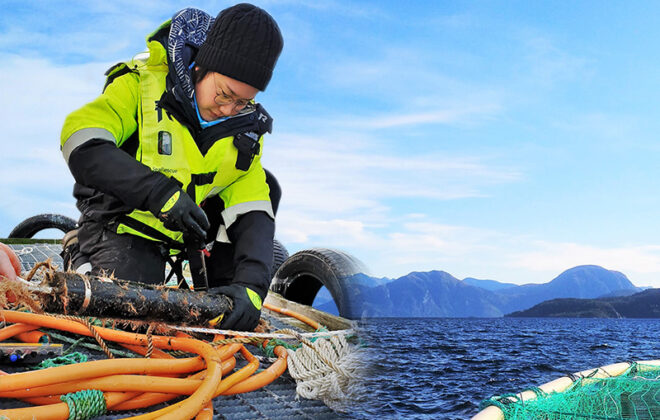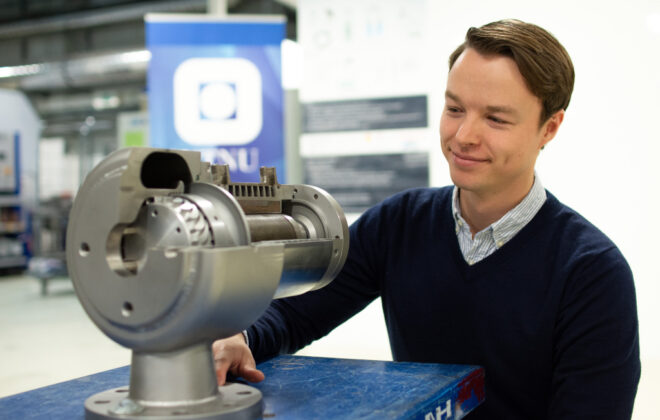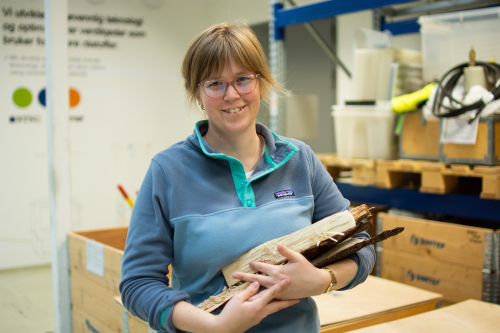Research gives new business possibilities for students
One and half year ago, four young scholars from the Norwegian University of Science and Technology started Skarv Technologies AS, a company delivering software- and hardware solutions for marine autonomous robotic systems. Among the four founders, are Nansen Legacy postdoctoral fellow Petter Norgren and Nansen Legacy PhD student Tore Mo-Bjørkelund.
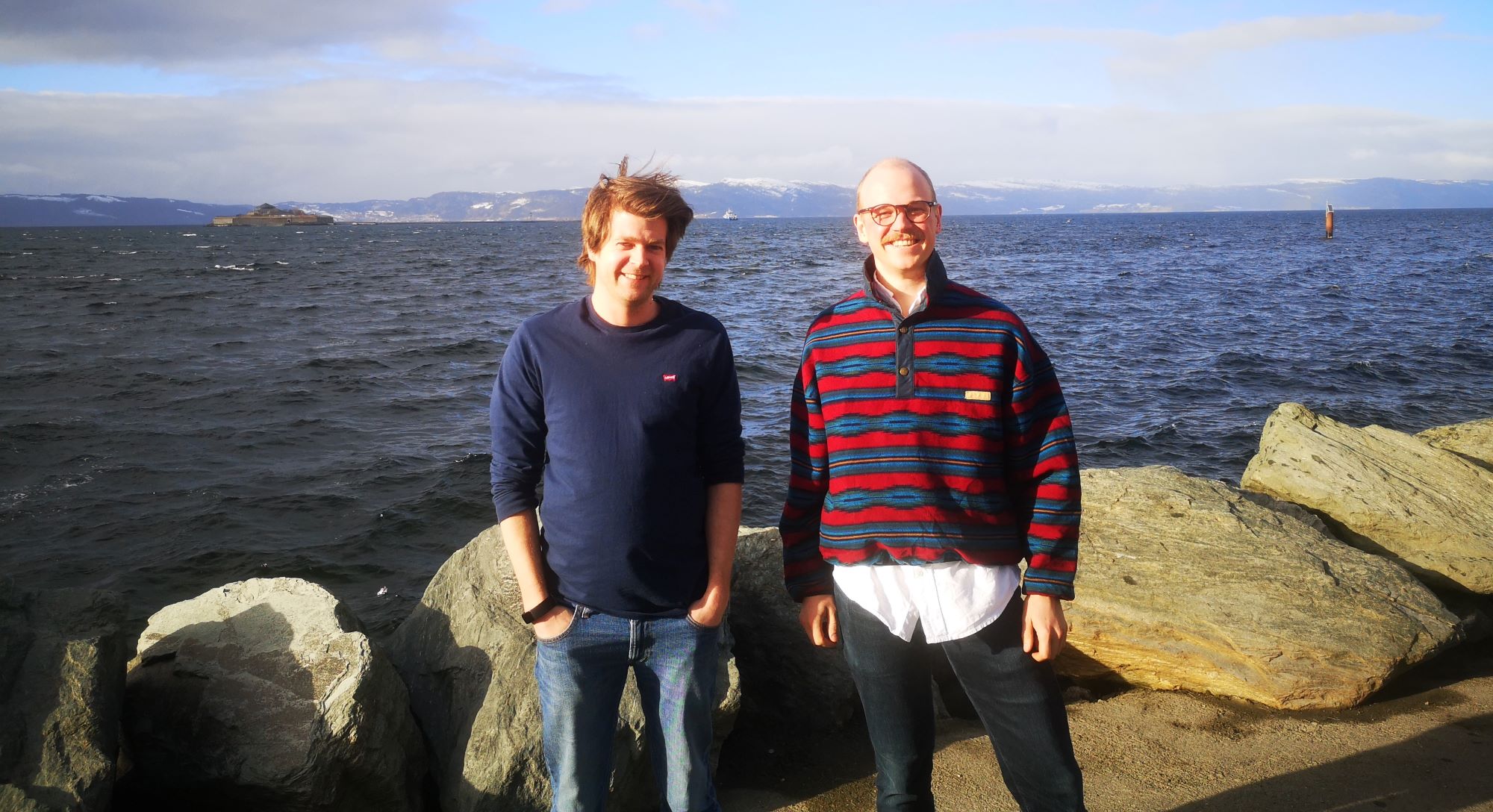
Petter, you just finished your postdoctoral period in the Nansen Legacy. What were you working on in the project?
Petter: In the Nansen Legacy project, I was working on under-ice navigation for autonomous underwater vehicles. Underwater positioning is a very challenging problem, especially in the Arctic and with the presence of sea-ice. Without good navigation it is very hard to perform autonomous operations. Through the project, I designed buoys with acoustic communication and positioning capabilities that would be using during Arctic research campaigns to aid the underwater robot in its task of collecting valuable data.
How did you like working in a large cross-disciplinary research project such as the Nansen Legacy?
Petter: The use of underwater robots is a tool for a user – typically to collect data. I enjoyed working in a large cross-disciplinary research project since it gave me the opportunity to get feedback from the end-users of the data that we collect.
Tore, also you are a marine technologist, halfway through your PhD within the Nansen Legacy. What are you working on right now?
Tore: I am working on adaptive behavior for sensor carrying AUVs, where the behavior is constrained by the data requirements of the end-user and the vehicle itself. I hope to expand the adaptive strategies to include more vehicles, cooperating to gather more synoptic data. I also have a side project gathering data under the ice using an experimental robot.
As a PhD student in a cross-disciplinary project, do you feel that it can be difficult to balance the width of the scientific framework of the Nansen Legacy, and the scientific depth and specialization that is needed for writing a PhD?
Tore: One of the main challenges as a technology-PhD is the gap between the established methods in science and the experimental methods we are developing. Bridging this gap and giving useful data to the scientists with the tools we use for technology research is not always straight forward.
One and half year ago, you two started a company together with two former colleagues from NTNU. Petter, how did the idea for starting Skarv Technologies AS come up?
Petter: The team behind Skarv Technologies have been working closely on different research projects for several years, with countless days in the field. Through the work we have done at the Applied Underwater Robotics laboratory, we have gotten a unique experience working with real underwater robotic applications, and we agreed that with our collective knowledge and experience we would make a good team also in a commercial setting. And that is how the company got started.
What kind of services does Skarv Technologies AS provide?
Petter: Skarv Technologies started as a consultancy company, and we provide consultancy services within data analysis and visualization, as well as autonomous platform development and survey support. In addition to this, Skarv Technologies develops in-house software for increasing underwater robot autonomy and situational awareness, which will aid underwater robots to perform more intelligent decisions based on the collected data.
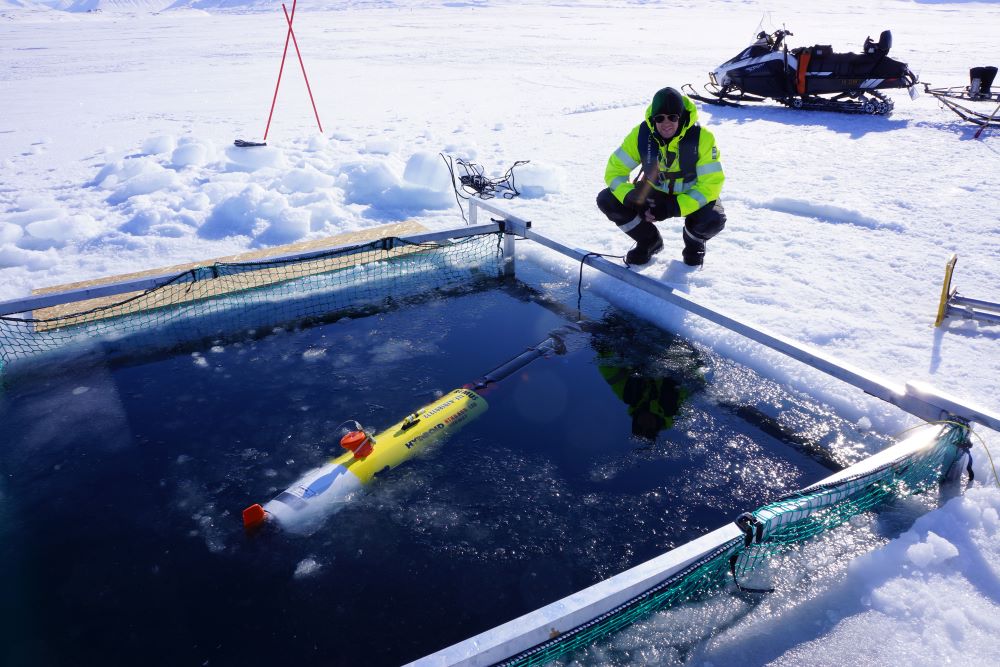
Both of you have used autonomous marine robots under harsh arctic conditions. What is the biggest challenge for the application of this technology in the Arctic at the moment?
Tore: I see two main challenges for autonomous marine robots in the Arctic: one is the ice cover, making surfacing to get the GPS position harder, the second challenge is the availability of cheap and robust robotic platforms that can be deployed and recovered from icebreakers without using “silk gloves”. The first challenge can be solved by tightly integrating the robot and the on-board positioning systems such as the HiPAP on RV Kronprins Haakon. The second challenge must be solved by robustification and further research into design of underwater vehicles for under-ice operations.
Do you think that autonomous robotic systems will play an essential role in arctic marine research in the future?
Tore: Once autonomous systems are accepted as a part of the vessel, such as the CTD, we can expand our understanding of what a ship is. The ship ceases to be a sensor carrying platform and becomes a mothership. A high-end autonomous underwater system can cover the entire water column, and have long endurance, enhancing the sensing capabilities of the ship, while being vastly more inexpensive and resource demanding. The same is true for surface and arial systems, and if we can integrate these robots into our working method, we can go from having point-measurements to having synoptic overviews of ocean processes.
Petter, do you think that your time in the Nansen Legacy has taught you something that will be of help for your company?
Petter: I think my time in the Nansen Legacy has taught me the value of working interdisciplinary, and to focus on the needs of the end-users before developing new technology. There is no use in developing a fancy technology or feature if no one is going to use it.
Do you have some recommendations for other young academics who wish to start their own company?
Tore: You do not need a fully formed idea, it will change anyways. What you need is perseverance and the willingness to try and fail.
Petter: I would say that the most important part of starting your own company is to have a good team at your back – you cannot do everything yourself and you need to rely on your colleagues to succeed.
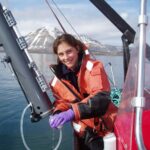
Lena Seuthe
Lena Seuthe is a scientific adviser for the Nansen Legacy project at UiT, The Arctic University of Norway
Tags In
Related Posts
Search
Søk
Categories
- Arctic Research
- Arkitektur
- Bærekraft
- Bioingeniørfag
- Biologi
- Biology
- Biomedical Laboratory Science
- Biotechnology
- Bioteknologi
- Chemical Engineering
- Chemistry
- Climate
- Computer Science
- Datateknologi
- Digital
- Elektronikk
- Energi
- Energi
- Energy
- Engineering
- Engineering
- Environment
- Food Science
- Forskning
- Fysikk
- Fysikk
- Havbruk
- Informasjonsteknologi
- Informasjonsteknologi
- Ingeniørvitenskap
- Kjemi
- Kjemisk prosessteknologi
- Kjemisk prosessteknologi
- Kreftbehandling
- Kybernetikk
- Marine Technology
- Materialer
- Materials Science
- Materialteknologi
- Matvitenskap
- Meninger
- Miljø
- Min ph.d.
- My PhD
- My PhD
- My postdoc
- Nanotechnology
- Nanoteknologi
- Ocean
- Oil and gas
- Physics
- Research
- Simulering og visualisering
- Spør en forsker
- Studentliv
- Sustainability
- Ukategorisert
- Universitetsliv
- University Life
Kategorier
- Arctic Research
- Arkitektur
- Bærekraft
- Bioingeniørfag
- Biologi
- Biology
- Biomedical Laboratory Science
- Biotechnology
- Bioteknologi
- Chemical Engineering
- Chemistry
- Climate
- Computer Science
- Datateknologi
- Digital
- Elektronikk
- Energi
- Energi
- Energy
- Engineering
- Engineering
- Environment
- Food Science
- Forskning
- Fysikk
- Fysikk
- Havbruk
- Informasjonsteknologi
- Informasjonsteknologi
- Ingeniørvitenskap
- Kjemi
- Kjemisk prosessteknologi
- Kjemisk prosessteknologi
- Kreftbehandling
- Kybernetikk
- Marine Technology
- Materialer
- Materials Science
- Materialteknologi
- Matvitenskap
- Meninger
- Miljø
- Min ph.d.
- My PhD
- My PhD
- My postdoc
- Nanotechnology
- Nanoteknologi
- Ocean
- Oil and gas
- Physics
- Research
- Simulering og visualisering
- Spør en forsker
- Studentliv
- Sustainability
- Ukategorisert
- Universitetsliv
- University Life

